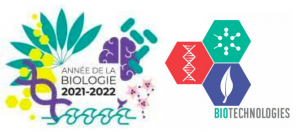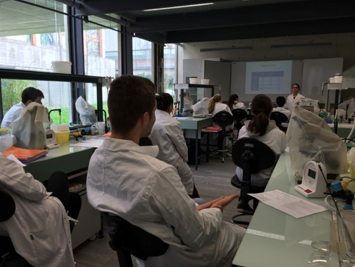
In Marie Curie high school in Versailles, we were three colleagues working on a lab called “Colorful world” : Géraldine Carayol, Anne Combes and Pauline Gardès. The aim of this lab is to insert a new DNA in competent bacteria (transformation) so that they will change colour.
We chose to do this lab because we wanted our students to do a transformation of bacteria. Moreover, CRI could provide the plasmids : pGRN and pPRL which contain genes responsible for the colour change and a gene encoding Ampicillin resistance. We ordered the competent E.coli from Promega and used the usual material we have in our labs.
What’s STL-Biotechnologies ? ---> click here
WHAT WE DID :
We tried different conditions of transformation and found that 1 μL of plasmid for 50 μL of bacteria was perfect.
We decided to grow the transformed bacteria on two different dishes :
- one containing LB medium + Ampicillin
- one containing LB medium only and on which we added Ampicillin disks. We thought it was interesting for the students to see the different colours depending on the proximity to Ampicillin.
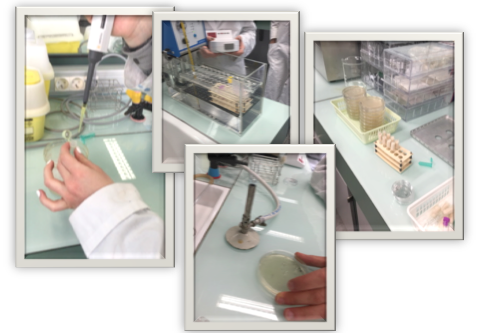
RESULTS
Here are pictures of the results :
| for the transformation with plasmid pGRN (giving the green color) |
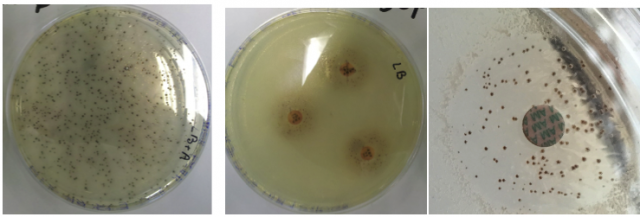
|
| for the transformation with plasmid pPRL (giving the purple color) |
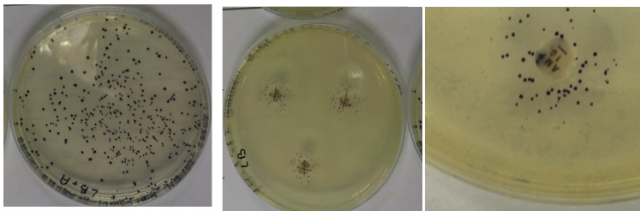
|
ANALYSIS
The experiment was a success ! We were able to change the color of bacteria colonies. And we saw that the colonies that were green or purple were also resistant to Ampicillin, because they had integrated the plasmid.
However, we found different unexpected results that we tried to explain :
| After several days, some white colonies appeared on the LB+Amp dish. We suppose it is because Amp is degraded by an enzyme synthesized by E.coli (a β-lactamase). So untransformed bacteria, which could not grow when Amp was present, can now divide and form colonies. |
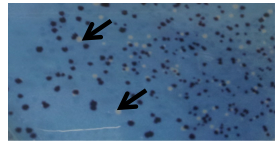
|
| After several days, the colonies’ shape was different between the pGRN and pPRL. Colonies with pGRN were smooth whereas colonies with pPRL were rough. And for this, we have no explanation ! |
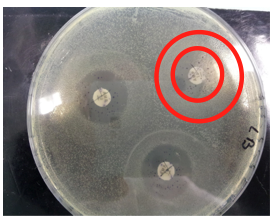
|
As competent bacteria are very expensive, we tried to make them ourselves but for now, it is a failure ! We will try again in September.
WITH THE STUDENTS

To introduce synthetic biology, we showed our students MOOC videos made by students from CRI. They discovered this new field, iGEM competition and the different methods and tools we can use to transform bacteria and build plasmids.
We also took some time to explain that we were creating GMOs and that we had to fill in some documents for the Ministry because these procedures need to be controlled and we have to demonstrate that we are able to work in good safe conditions.
Then we explained the experiment and gave them the protocol or build the protocol with them. We did the lab in 2 or 3 hours, depending on the scientific level of the class. And the week after, we spent 2 hours analysing the results.
Students had a lot of questions and thought of several hypothesis to answer them. They were very interested, even passionate sometimes ! They loved the fact that the labs came from “real modern research” and that we were not sure of the results we will obtain. One class could even discuss its results with Juanma (Master student from the CRI). He helped them design some experiments to test their hypothesis. Maybe, we will be able to do these experiments next year.
We definitely will keep on this work. Our idea is to continue the work rather than doing it again exactly the same way. We could for example make our next classes test the hypothesis of this year’s class. And we received some new plasmids we would like to try : one which should make bacteria smell like banana and one which should make a bacteria express β-galactosidase at different levels. This should be fun ! New adventure coming soon …


